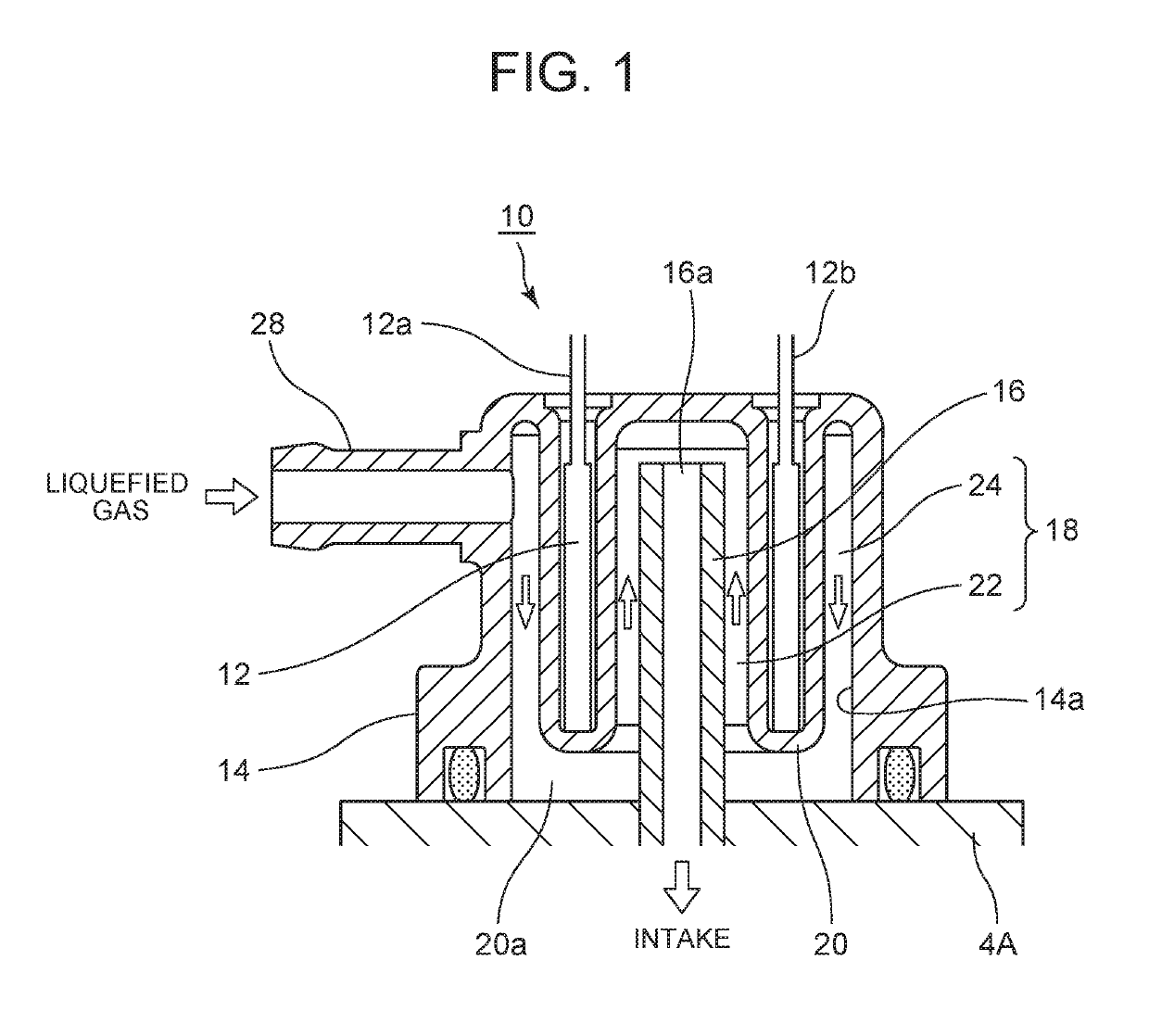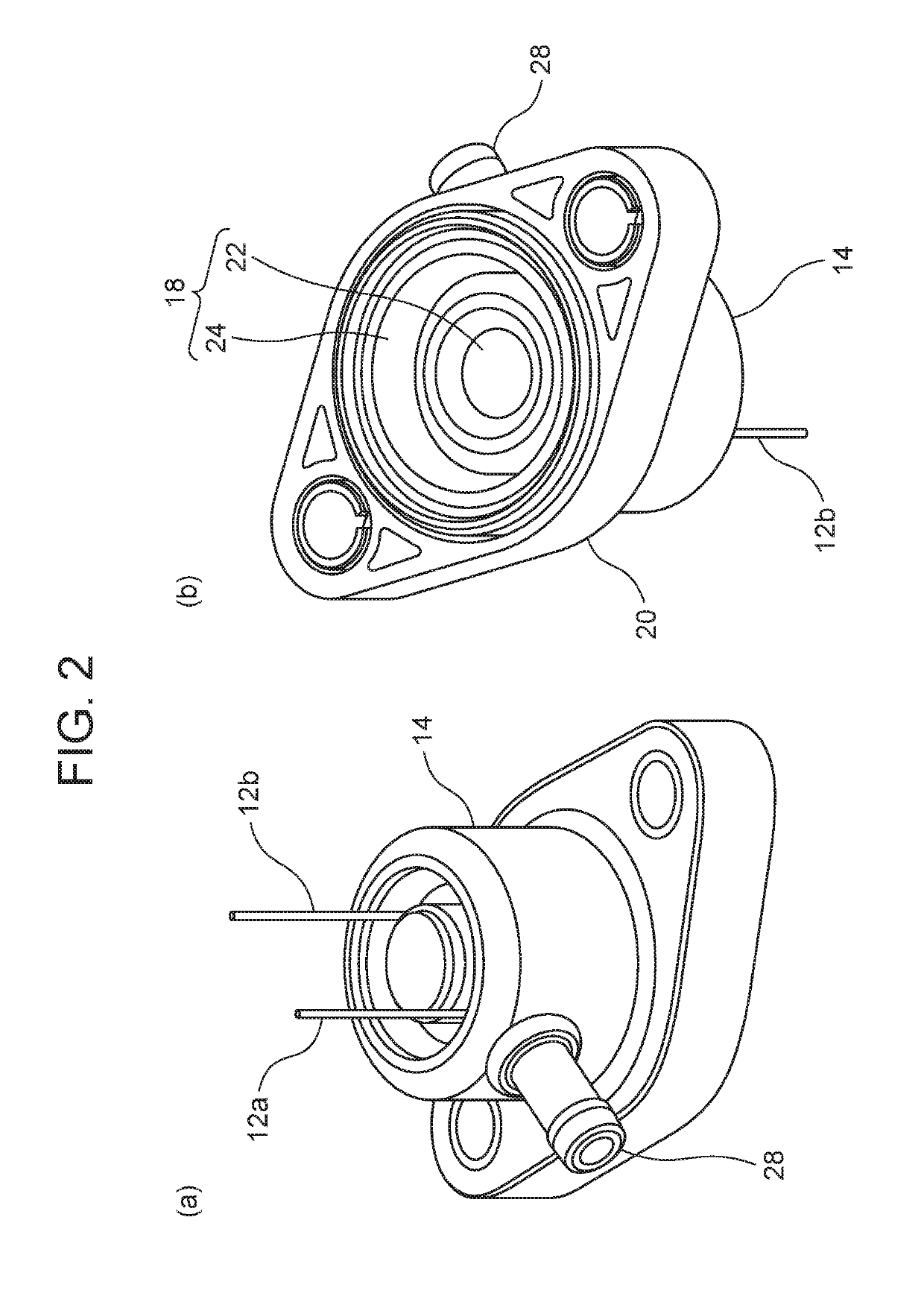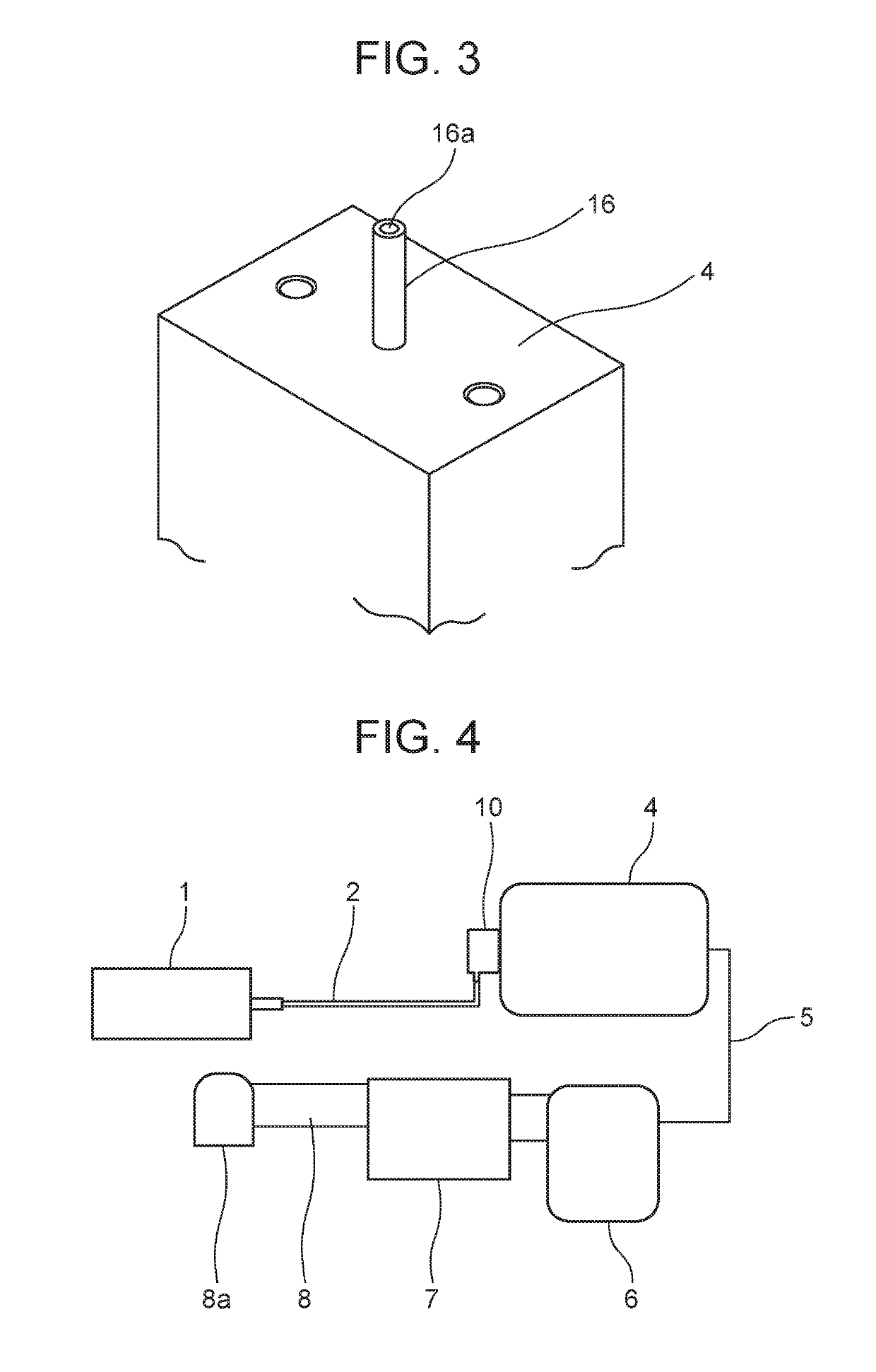Heater device for heating liquefied gas
a heating device and liquefied gas technology, applied in the direction of ohmic resistance waterproof/airtight seals, combustion types, separation processes, etc., can solve the problems of increasing the number of components, the need for higher power, and the inability to atomize liquefied butane, so as to reduce the number of assembling steps and reduce the cost. , the effect of reducing the number of components
- Summary
- Abstract
- Description
- Claims
- Application Information
AI Technical Summary
Benefits of technology
Problems solved by technology
Method used
Image
Examples
Embodiment Construction
[0045]FIGS. 1 to 4 show an embodiment of a heater device for heating liquefied gas according to the present invention. In the figures, portions that are the same as or corresponding to portions shown in FIG. 7 described above are denoted by the same reference numbers and explanations thereof will be omitted.
[0046]Now, according to the present invention, in a vaporizer serving as liquefied gas-utilization equipment, a heater device 10 for heating liquefied gas that promotes atomization of liquefied gas at low temperatures by heating liquefied gas flowing through a gas flow path is provided. The heater device10 is, in the system shown in FIG. 4, equipped with a device housing 14 having substantially a cup shape with a built-in heater 12 having a cylindrical shape or the like for heating liquefied gas, and when it is assembled to a regulator 4, when having a gas intake opening 16a protruding from the regulator 4 a hollow portion 18 is provided between the device housing 14. The hollow ...
PUM
 Login to View More
Login to View More Abstract
Description
Claims
Application Information
 Login to View More
Login to View More - R&D
- Intellectual Property
- Life Sciences
- Materials
- Tech Scout
- Unparalleled Data Quality
- Higher Quality Content
- 60% Fewer Hallucinations
Browse by: Latest US Patents, China's latest patents, Technical Efficacy Thesaurus, Application Domain, Technology Topic, Popular Technical Reports.
© 2025 PatSnap. All rights reserved.Legal|Privacy policy|Modern Slavery Act Transparency Statement|Sitemap|About US| Contact US: help@patsnap.com



